Disclaimer: This post contains affiliate links to handpicked partners, including tours, gear and booking sites. If you click through or buy something via one of them, I may receive a small commission. This is at no extra cost to you and allows this site to keep running.
Here’s why a homestay in Southeast Asia is the best way to understand local culture and what you can typically expect from the experience.
If you like understanding the local culture more deeply, as well as meeting, interacting and living with locals to do so, then a homestay in Southeast Asia might be a worthwhile experience beyond the temple hopping trails and hostel stays.
My first homestay was on Dong Deng (one of the 4,000 islands in Laos). I continued in the hill tribe villages in Thailand, living locally on a trek in Myanmar and staying in a community homestay village near Panulti in Nepal. Every homestay is a unique experience in its merge of location, who you are living with and what you can experience while there. Once you have tried it, you will have a better idea if this kind of travel experience is for you or not.
Importantly, when chosen right and through legitimate means, homestays support the local economies you are visiting.
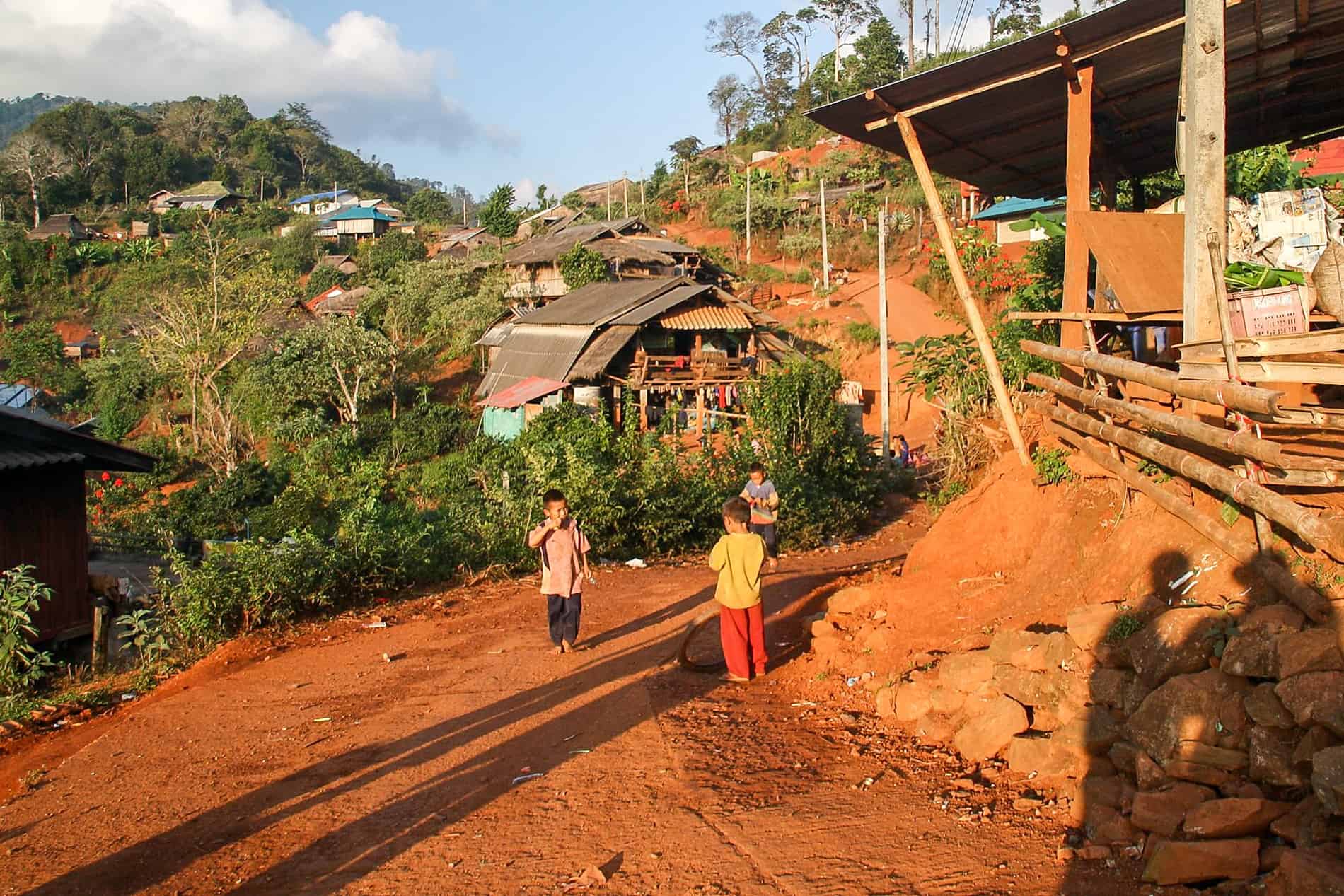
The Community Culture Experience of a Homestay in Southeast Asia
Contents
The Authentic Experience of a Homestay in Southeast Asia
It’s always great when you meet locals, whether it’s the man who drives your tuk-tuk, the waitress struggling to pay her education fees, the family on your seven-hour bus journey or the stranger on the side of the street. Random conversation and the sharing of life stories are always a memorable part of travels, and living with locals can be a wonderful extension of this.
The reality is that it can also be pretty tough going. It means living in someone’s personal space, which they kindly give up in their own house. They cook for you, or you cook with them, you dine together, engage with their family via smiles and gestures (language doesn’t always have to be a barrier to communication and friendship), and you get to visit the area, just as if you were living there.
It means giving up most forms of comfort, or nearly all, especially even the smallest of showers. If you don’t like the food served, then tough (it was cooked for you, and you will be grateful), and it means you may rise with the call of the roosters, not on your own time.
I love this kind of experience. Real life is a cultural immersion in one of its base forms. Despite the challenges, it is a unique experience I urge you to try – even if it’s just once and you don’t like it.
Homestay Amenities
The sleeping space typically consists of a shallow mattress, blanket and mosquito net – not an experience for those looking for anything particularly comfy. But it’s comfortable enough, and that’s all that matters.
Showering isn’t a luxury. For example, the bathroom in my homestay in Laos had a toilet that you flushed using a bucket of water collected from the small well structure in the corner of the room (like a bath but at shoulder height), and it was the same water and bucket you used to have a shower, too. Some might not like using water that is days old, while others take it as it comes.
Basic amenities are normal.
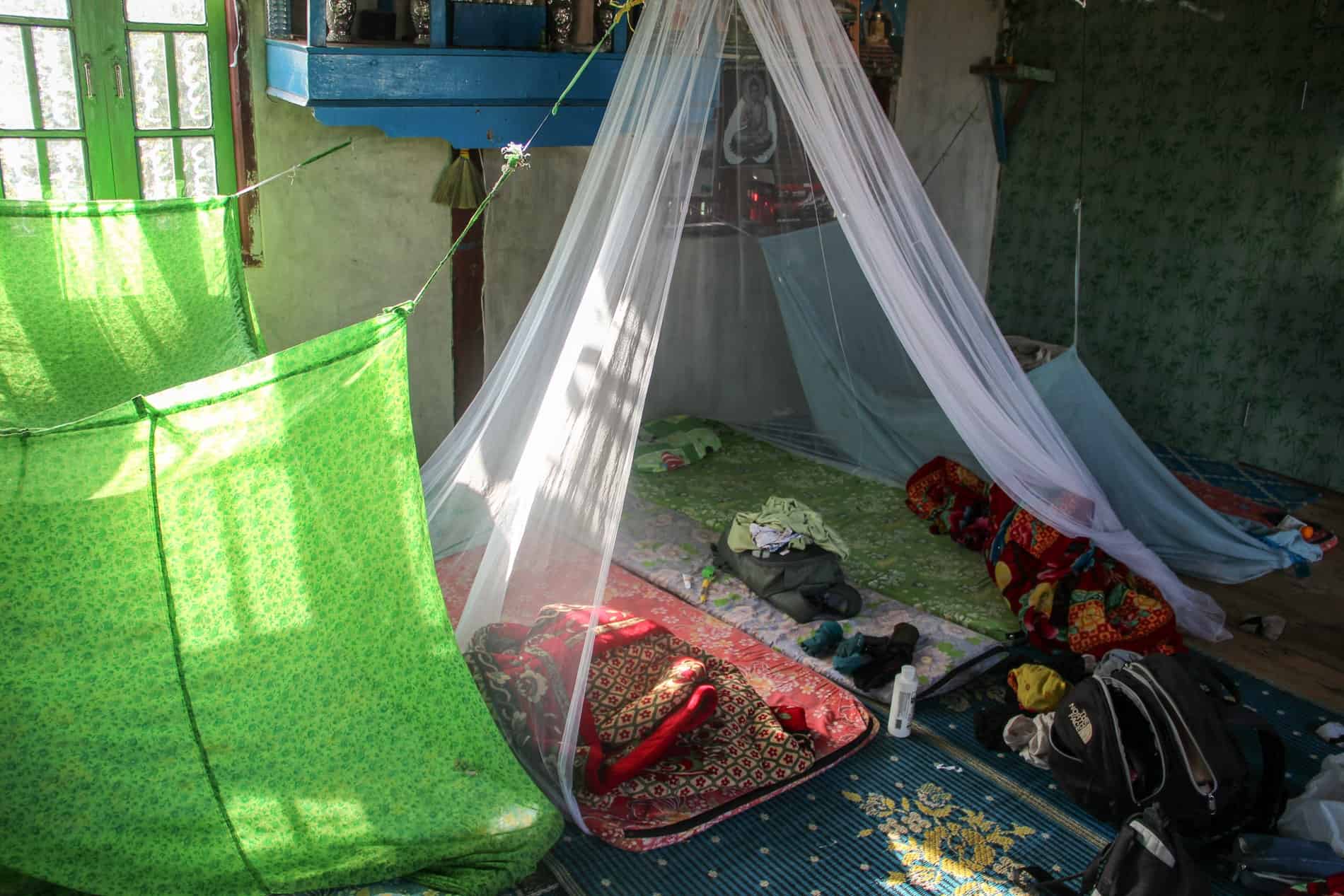
Communal homestay room with mosquito nets.
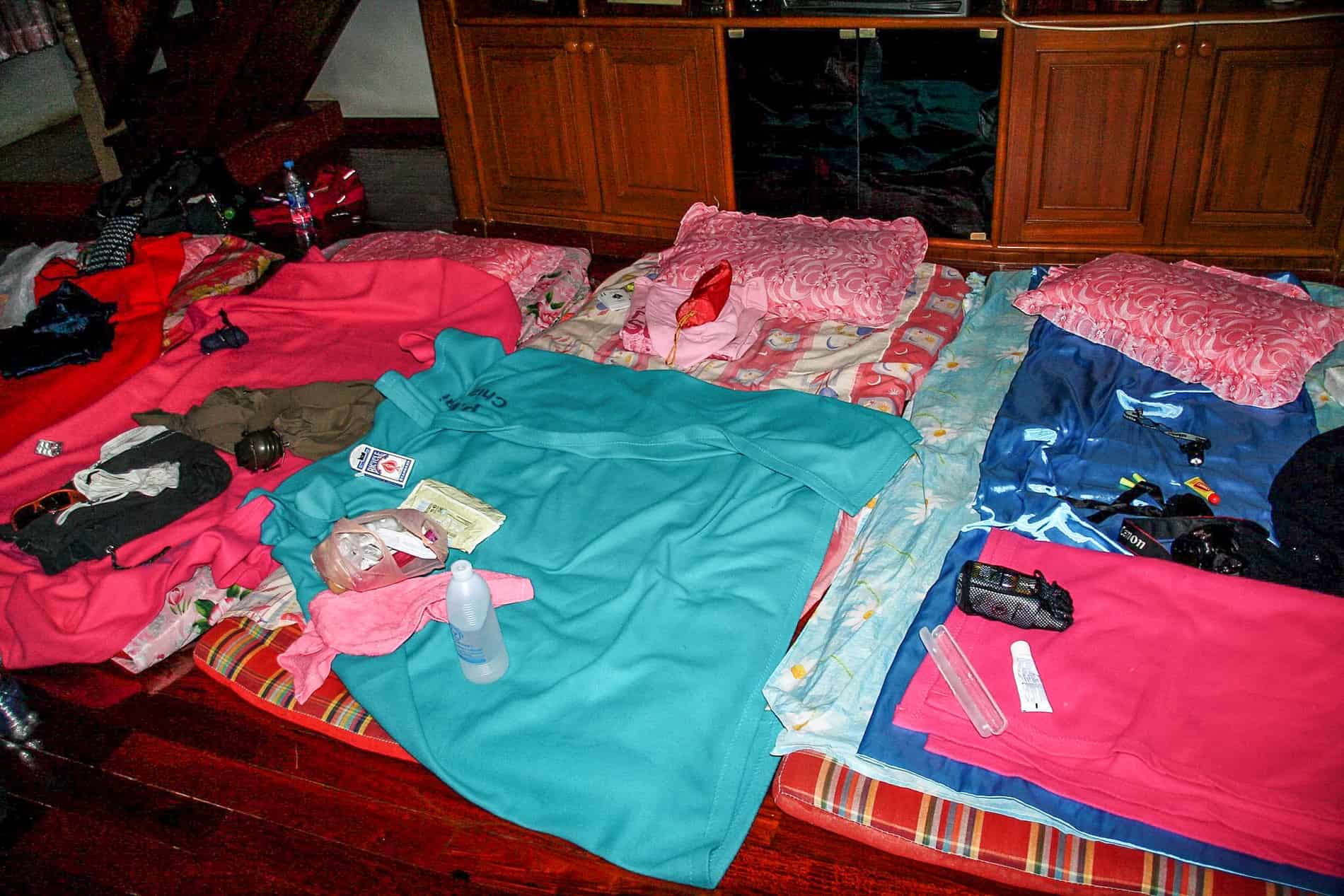
Sleeping mats are laid out in a spare room for house guests.
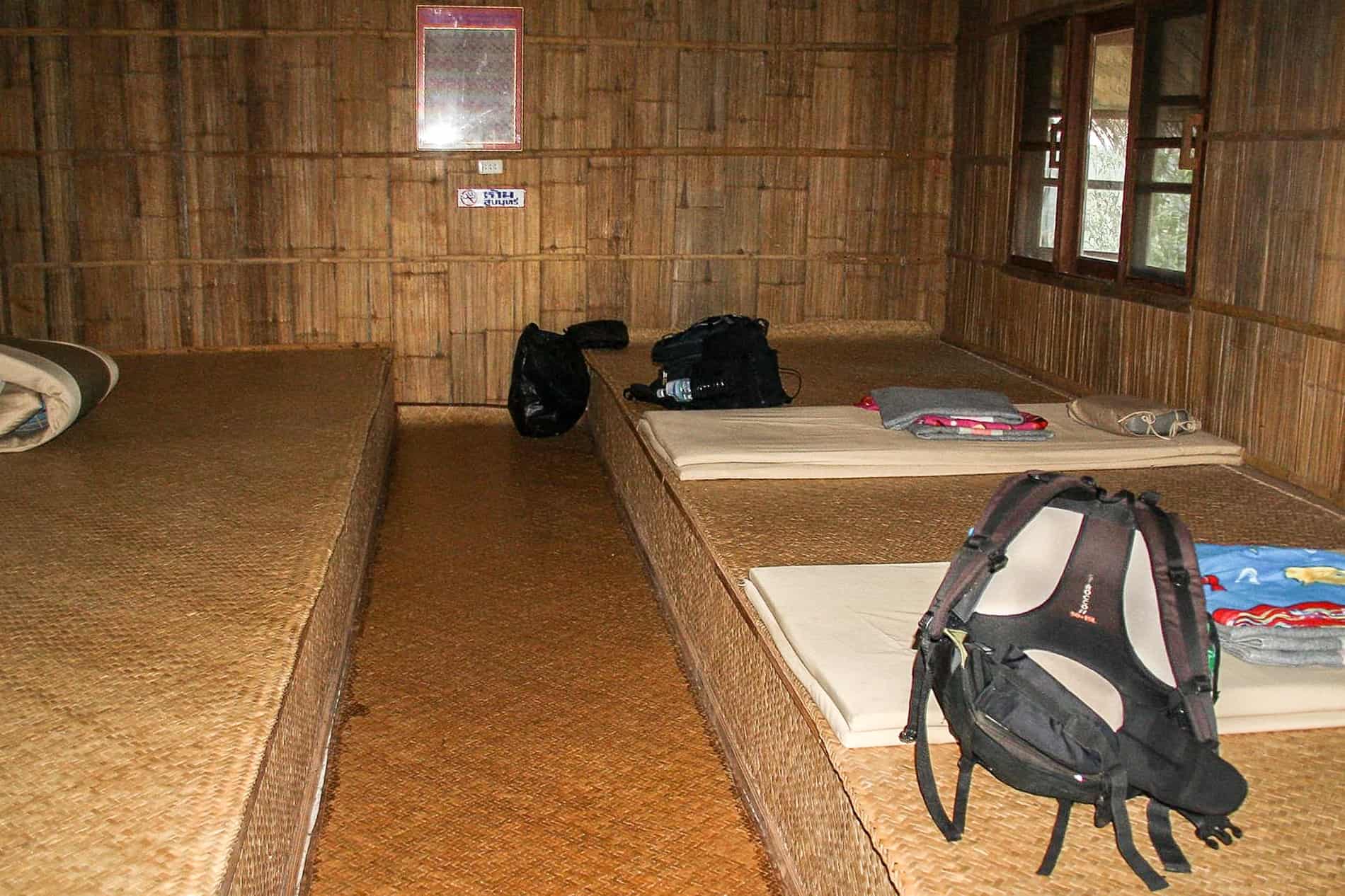
Designated sleeping room in a bamboo house.
Eating and Mealtimes in Homestays – What to Expect
At some homestays, it is customary to purchase supplies at a local store before you arrive. This also helps contribute to the cost of staying there. Often, you can cook with your hosts and learn about the preparation of local dishes.
When you eat, it’s not always with chairs and tables. You could be eating whilst sitting cross or frog-legged on a mat on the floor – it’s quite refreshing and a great way of interacting when you are not so far removed from others.
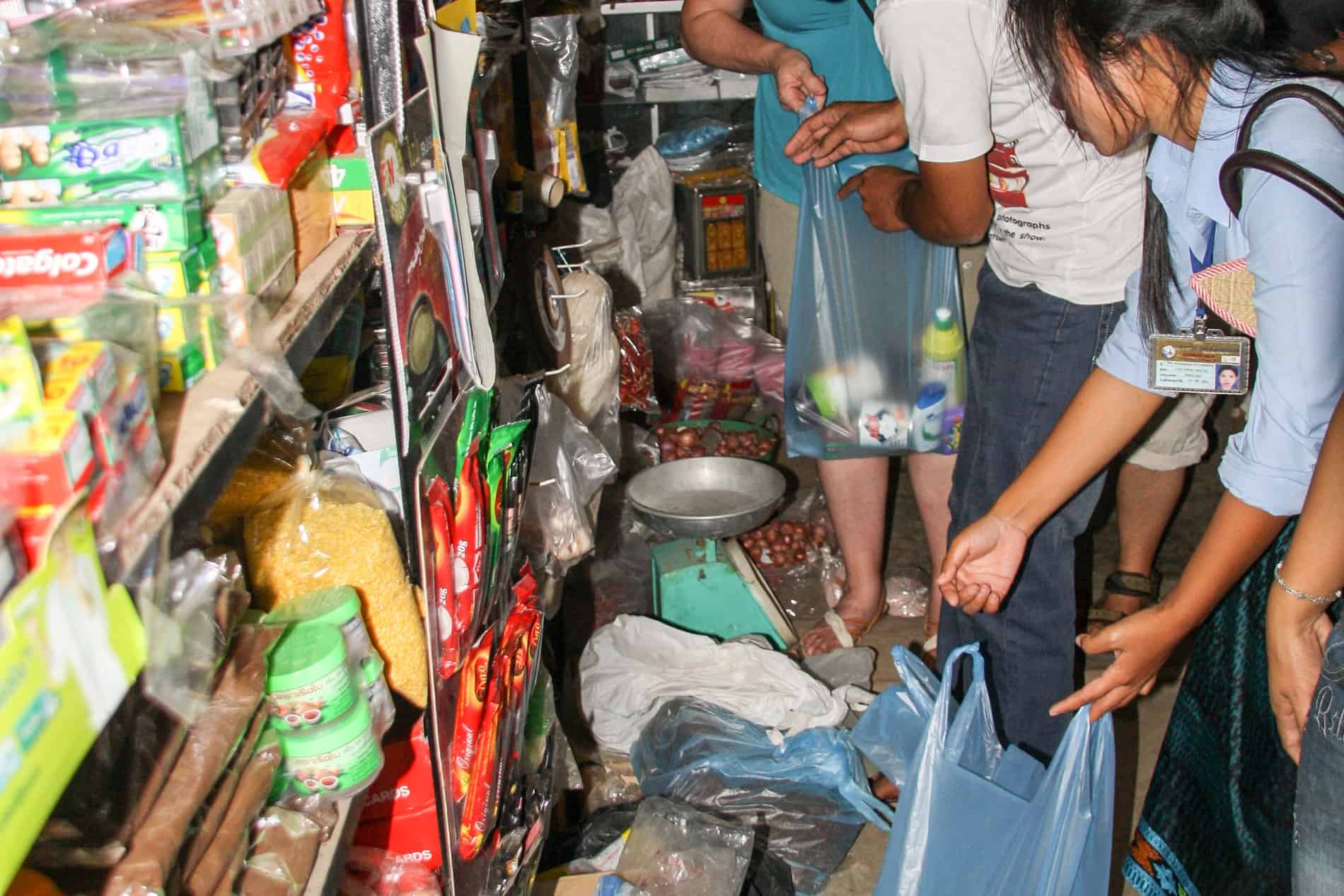
Buying supplies from the local store for our homestay in Laos.
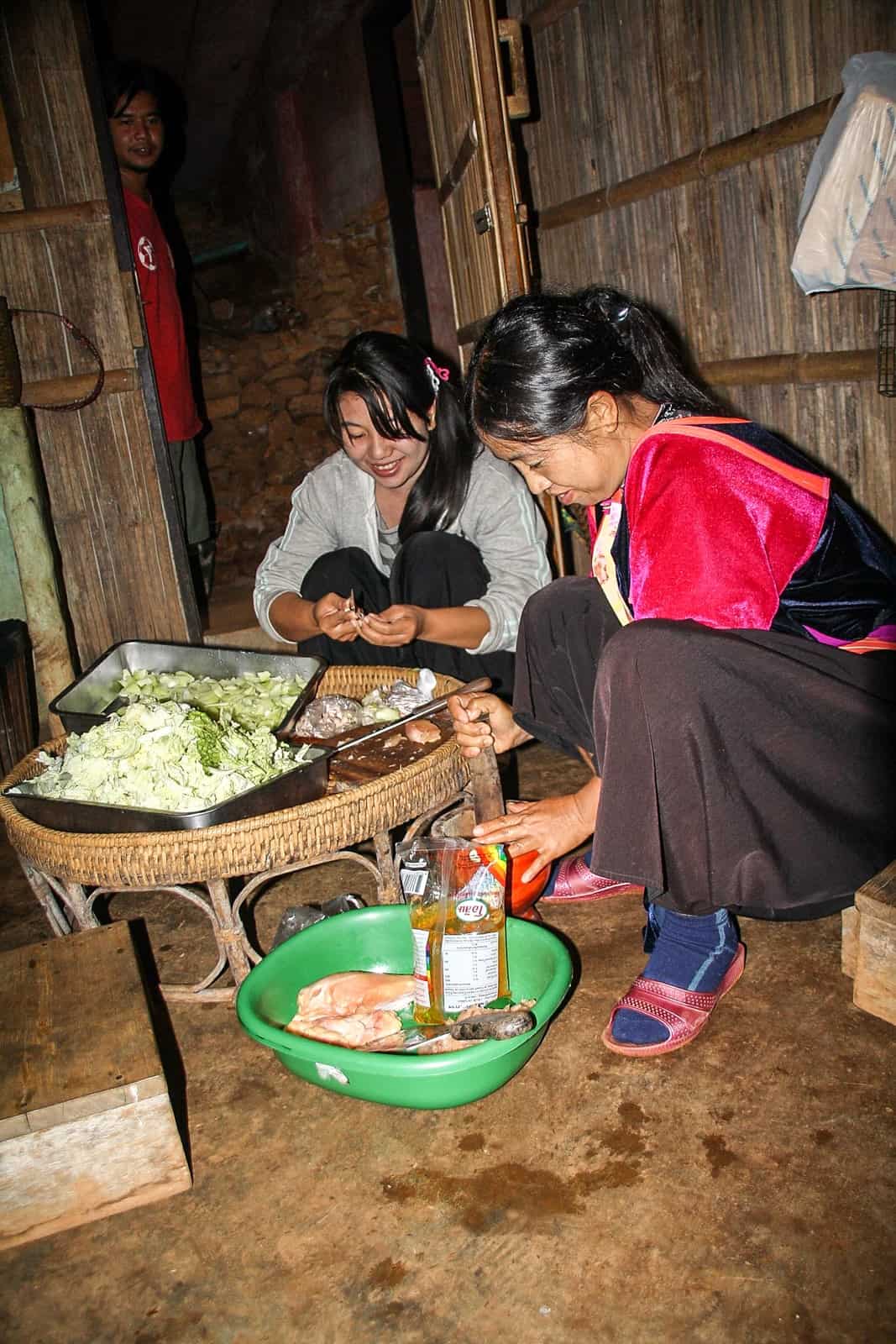
Local women from our homestay prepare the evening meal.
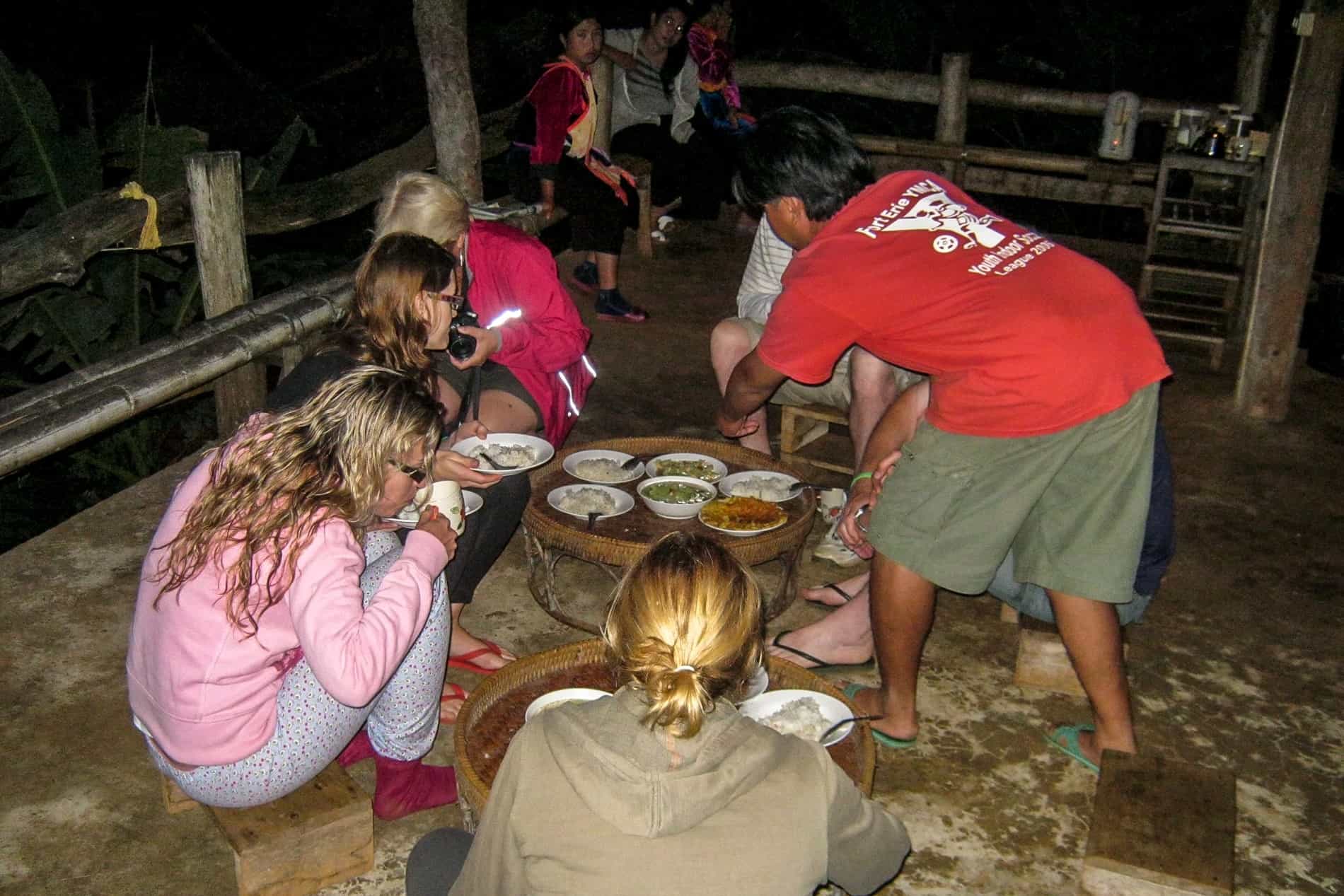
Dinner time in the Northern Thailand homestay in the hills.
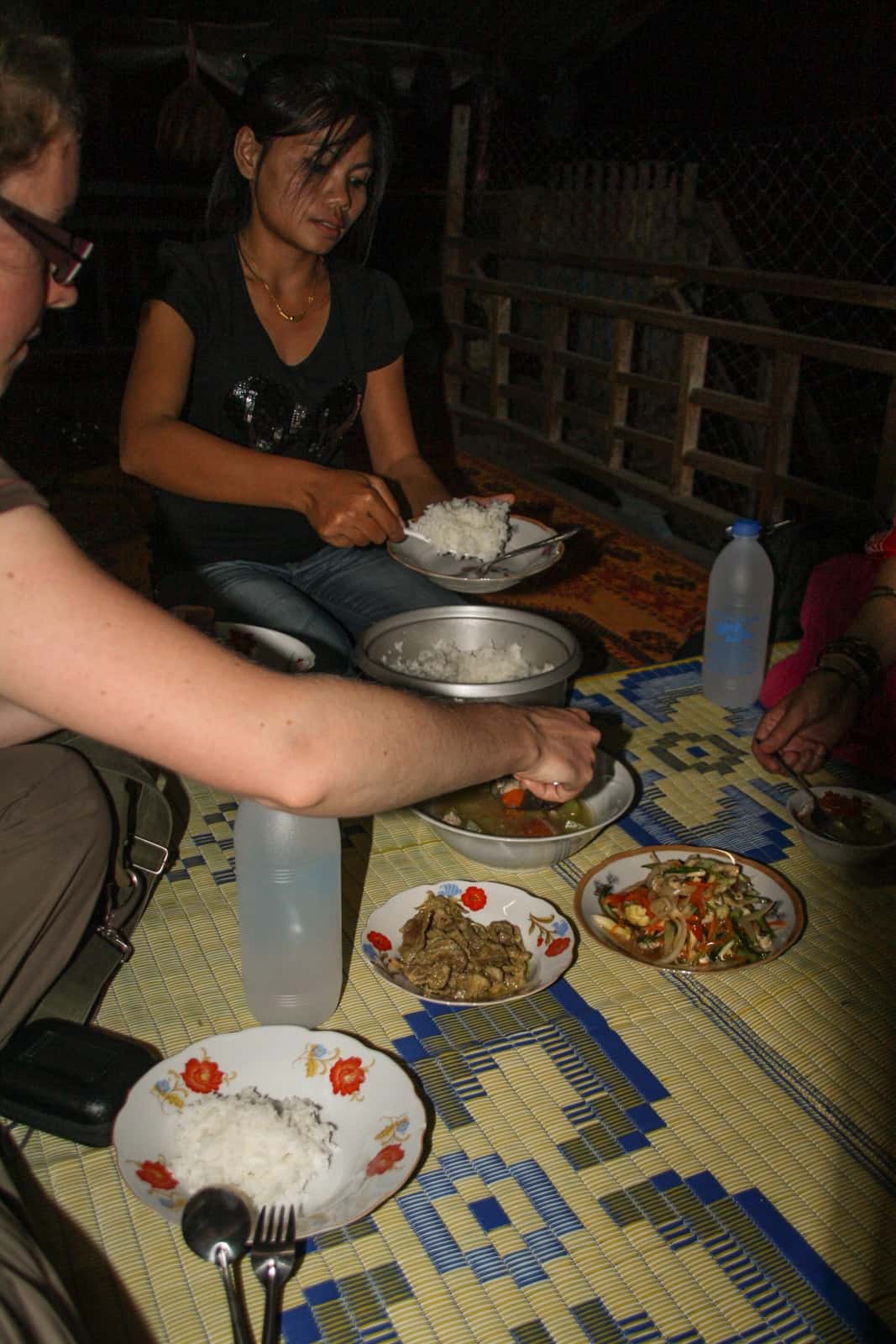
Dining with the family in Laos.
Typical Day in a Homestay
Morning – The Loud Wake Up
You will no doubt wake up to the natural light, but you may be lucky to be woken up by the delights of nature. Our morning wakeup call in the Thailand hill tribe village consisted of a few dogs and chickens having a good gander underneath our hut, followed by a man touring the village on his megaphone. Then there are the rooster cries before 6 am. You don’t need an alarm clock at a homestay.
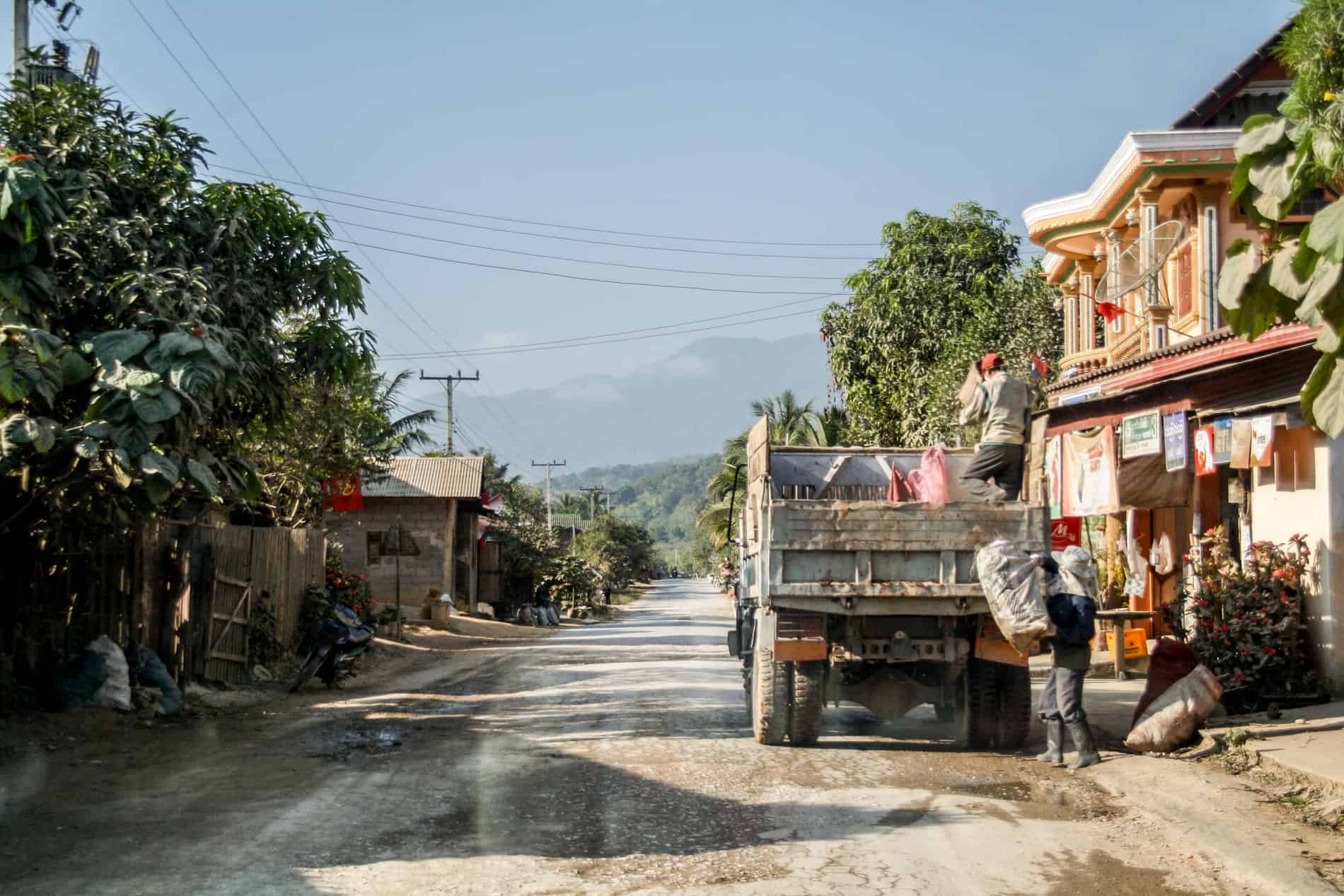
Life on Dong Deng Island.
Daytime – Time to Explore
Daytime means getting acquainted with where you are staying and thrown into local life. Passing kids on the way to and from school, meeting the women working hard in the rice fields, and speaking to local shopkeepers, farmers, fishermen and cooks eager to show and tell us about their homes.
Whether sitting on an empty beach watching the world go by, bathing in the river and basking in the glorious sunshine, or relaxing on your homestay house porch, you become a known and trusted face, and you’ll soon make friends.
In Laos, we even met local women who were harvesting rice and tried our hand at beating the rice hulls to understand more about the industry and work involved. In the Thai hill tribes, we would wander the dirt roads until sunset and rest in the simplicity of life, realising how others live so contently without mod cons and distractions.
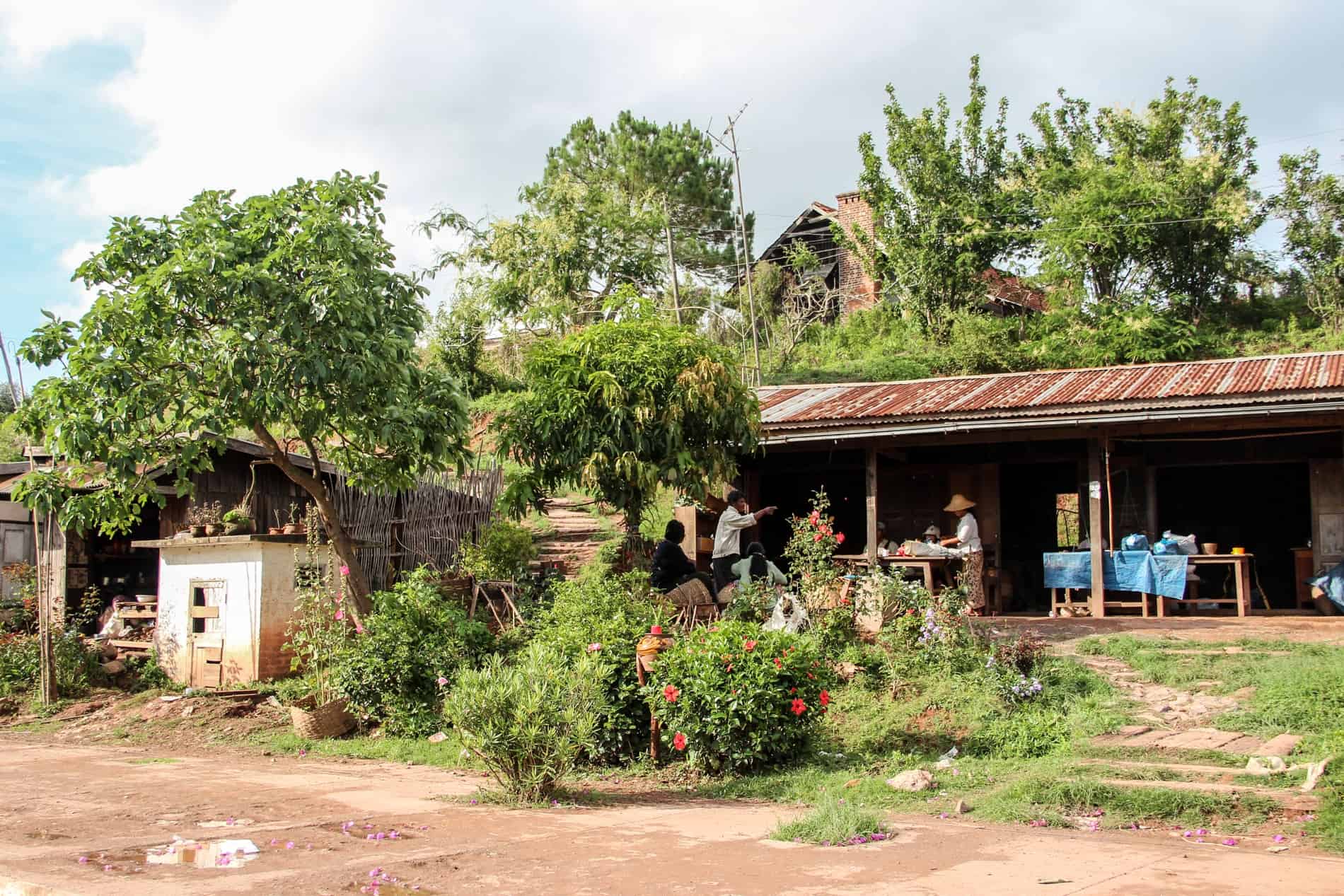
Gathering to eat at a local village house in Laos.
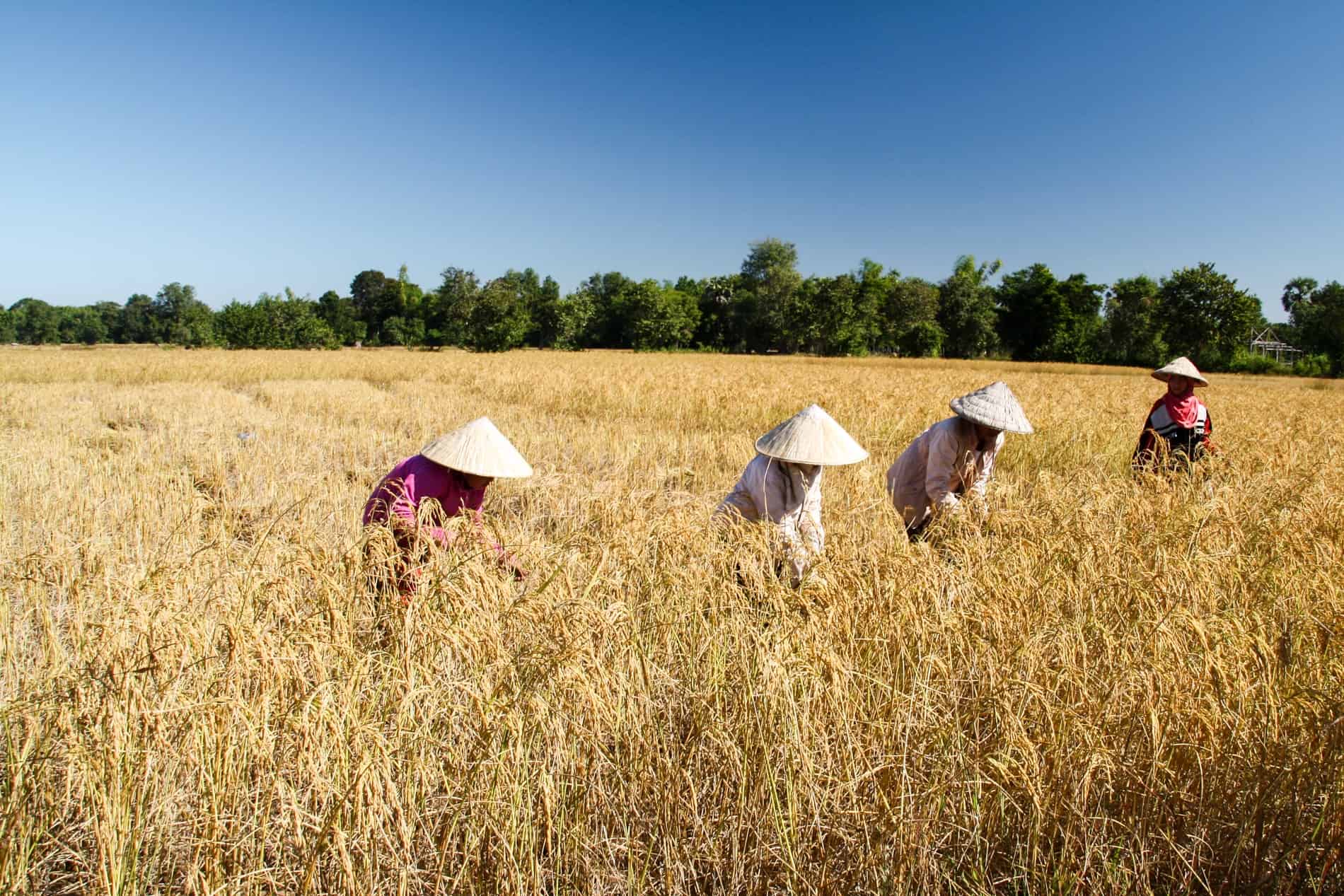
Local woman harvesting rice in Laos.
Homestays at Night – Reality of Local Living
No one bolts the locks on their houses, but it’s perfectly safe.
Sometimes there may not be a lock at all. It’s a village, and there is a high level of trust. I never once felt unsafe. You may see random people wander past you, on the way to the bathroom or through the room you are staying in. Generally, many people live in one house and you are occupying part of their space. A smile goes a long way in saying ‘thank you.’
Take a few moments to yourself on the front porch under the stars.
Four of us put a head torch on flashing mode and created a small disco with an iPod on low volume, and then later grabbed a pillow to lay there and immerse ourselves in the beauty and the calm. It’s amazing what activities you can consider when you have little resources.
Get in your bed at a decent hour.
The locals may be in bed long before you, but this isn’t a party zone. When darkness falls and the bugs come out to play, you must get under your net. My friend had an unlucky encounter when she felt something in her PJs which turned out to be a little cockroach. That was possibly my worst experience of a homestay ever – her going crazy (rightfully so), me with a light searching, and both of us trying to squish it under the mattress.
Scan your bed with a torch before you sleep.
Have everything you need ready, like a jumper, in case it gets chilly. Also, ensure you are not sharing your bed with anyone/anything else. Keeping your net tucked in as dawn approaches – likely when you are out doing other things or having dinner – is a good idea and limits stress before bedtime.
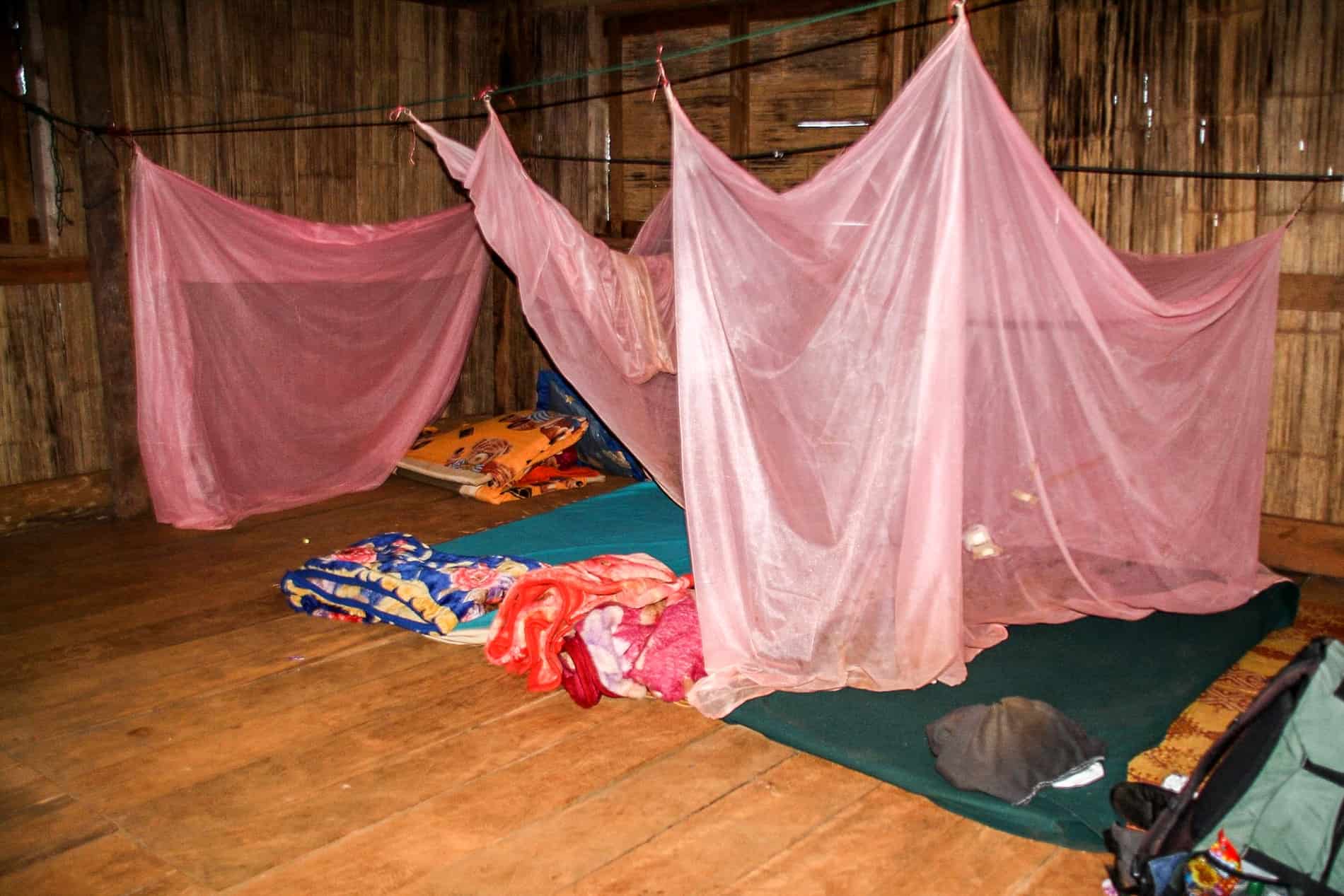
The basic amenities of a homestay – all part of the experience.
How Do You Arrange a Homestay in Southeast Asia?
Whether through tours or responsible homestay platforms, to staying with friends, here’s how to plan your homestay experience.
Mini tours, excursions and treks.
I was lucky that my homestays were included in a bigger itinerary. I was on a small tour in Laos, and this island was used specifically for visitors of that company every few weeks. My time in the hill tribes was a part of a jungle trek we undertook starting in Chiang Mai. Some programmes arrange for pick up from your hotel/hostel and facilitate a two-day homestay excursion.
Word of mouth.
Homestays can generally be sought out when researching a destination or through word of mouth when you are in an area. Some form a part of conservation drives or animal welfare. For example, you can stay in Kampong Kleang, Tonle Sap Lake, Cambodia for two nights as part of an environmental awareness project. Initiatives like Bloom Microventures in Vietnam run community tours where the money is used as a microloan to support local business ventures.
Look at less touristy areas.
Find places that you know won’t be overrun with tourists who treat homestays like a museum. It depends on how rural an experience you want, but you also know that your money is probably going to a more direct cause rather than some of it being swallowed up in administration.
Look at websites similar to Couchsurfing.
Look at tourism sites which list accommodations, including homestays (like this one in Kerela, for example) or use a worldwide community site like Homestay, where you can filter by location, price and comfort.
Stay with local friends and meet their families.
You’ll likely make friends whose families live in a village near or between big cities like Siem Reap. Over time, you may come to use the invitation, just as I did, of being welcomed into a family home. However, it takes time to forge a level of trust and meaningful friendship before just randomly visiting a more isolated area, but when the opportunity arises, take it.
Stay in family-run guesthouses.
While less intimate, you can still ensure your money is in the hands of locals by staying in family-run guesthouses. In Cambodia, for example, the big luxury hotels are not even Khmer-owned, so by staying there, you are not directly benefiting the local people who deserve it more.
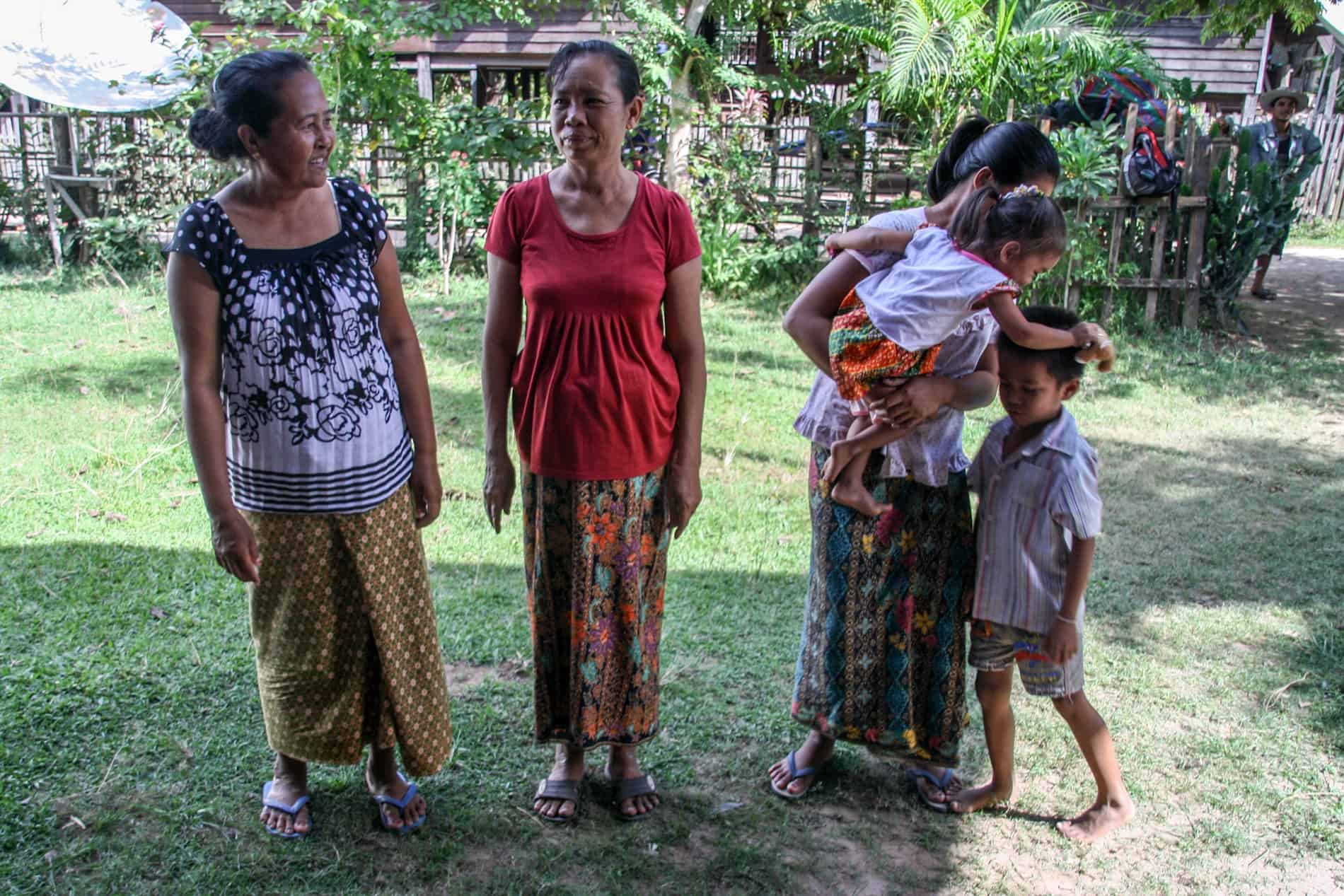
Our house mothers in Lao.
Travelling Southeast Asia?
Travelling in Southeast Asia? Check out my other travel tips and destination insights on the countries in the region.


Max Garland says
Hi,
I am travelling through southeast Asia later this year. Being a geography graduate, i am really interested in their cultures, ways of living, beliefs, and politics and really want an authentic experience. What is your advice for arranging a homestay with someone rural?
Becki says
homestay.com is a good place to start where you can find rooms in houses in small villages.